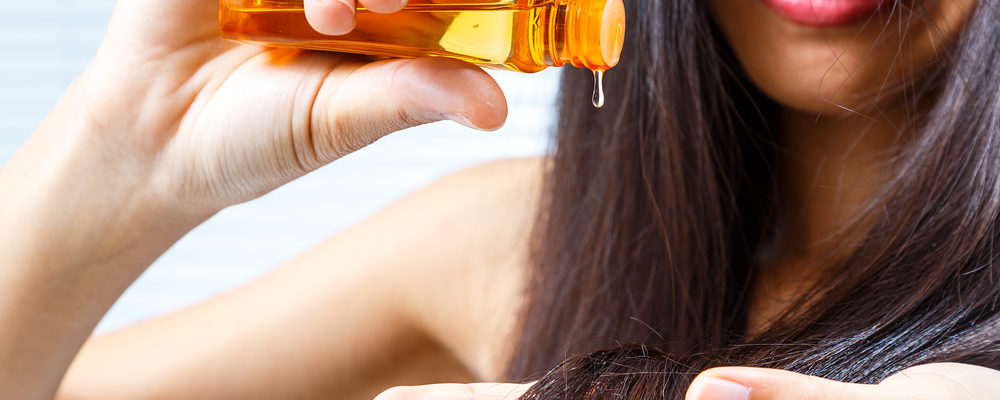Is your hair crying for help? Is it dry, split, brittle and thinning? It’s high time you take care of it properly! There are several ways to help, but which one will be most effective? Get to know the best ways to regenerate damaged hair!
We can talk about damaged hair when its porosity is increased – when the cuticle layer is looser or there are gaps and holes in the cuticle. The outer layer of keratin scales protects the hair from harmful factors and loss of water. Therefore, when the scales are lifted, all valuable nutrients escape from the hair. That’s how it looks, but it’s worth knowing what exactly contributes to the fact that your hair loses its vitality.
The most common causes of hair damage include:
- frequent colour-treating and bleaching without proper protection,
- frequent hot styling (also without proper protection),
- hair exposure to the sun without a sunscreen,
- wearing the hair in tight updos,
- hair care that is not adapted to the type of hair,
- combing wet hair.
THE CARE OF DAMAGED HAIR
Taking care of damaged hair can be difficult because the hair lacks many nutrients, moisture and protection. It is in need of humectants, emollients, and proteins – in other words, a complex and multidimensional care.
What’s more, damaged hair is very fragile and thus, it is very easy to worsen its state even more. A single mismatched ingredient is enough to make it dull, frizzy and even more breakage-prone than before.
There are a few rules you must remember about!
How to take care of damaged hair?
- damaged hair needs to be moisturized and lubricated to the same extent,
- it is also necessary to regenerate it, i.e. to supply proteins,
- it is impossible to seal split ends, so you have to cut them down,
- for starters, we must limit everything that is harmful to the hair.
Therefore, if your hair is damaged, stop straightening it. High temperature only worsens the situation and makes the hair lose even more water. The same applies to exposure to the sun, sea salt, styling agents and hair dyes. It is worth (at least for the time of intensive regenerative treatment) discontinuing the use of chemical products and everything that worsens the condition of the hair.
TIP: If you cannot do without curls, even when your hair is extremely damaged, go for natural methods of hair curling. For instance, you can use rollers that do not require the use of heat. Additionally, if you use natural oils as styling agents, you will nourish the strands at the same time.
Furthermore, washing, combing, and styling damaged hair also matter. Each procedure must be well-thought-out and conducted gently. Damaged hair requires support at every stage.
Washing damaged hair – use only mild shampoos, dedicated to children, without the content of strong detergent that could irritate the scalp and dry out the hair. Important! Damaged strands should be combed before washing. However, if you must redo it after the wash, make sure to be extremely gentle and use your fingers because wet hair is more vulnerable and susceptible to damage.
Brushing damaged har – always gently and when the hair is dry. It would be best if you could use a wide-tooth comb or the Tangle Teezer brush which will detangle with minimum breakage and damage, leaving hair smooth, soft and shiny.
METHODS FOR REGENERATING DAMAGED HAIR
Can damaged hair be regenerated? Yes, of course, provided that we apply the right cosmetics or homemade mixtures of nutrients. You need to know what is best for damaged hair, what proportions to apply and how often to use it. Here are the most popular ways for regenerating damaged hair.
1. Hair oiling
Natural oils are what damaged hair needs the most because they reinforce the hair’s natural hydro-lipid barrier which in consequence, reduces water loss. In this case, the best oils are those rich in omega-3 and omega-6 fatty acids, for instance, argan oil, evening primrose oil, maize oil, avocado oil, sweet almond oil. They can be used on their own but are much more effective when combined with other oils. Such oil blends, for example, Nanoil are enriched with keratin for even better results. Also, a great solution is to perform hot oil treatment – this way, oils are better absorbed and work in-depth.
2. Homemade protein hair mask
The thing that damaged hair lacks is a proper dose of proteins. Our strands are naturally made of them, mainly from keratin, which is why it should be present in the cosmetics we use. You can make a homemade protein mask, eg from the egg yolk, ripe banana, avocado flesh, milk, yoghurt (or other dairy products). The ingredients can be mixed as desired, enriched with oils, lemon juice (note: lightens hair) and other similar ingredients. It is important that the consistency facilitates application and the mask does not run off the hair.
3. Strengthening hair rinses
The treatment of damaged hair should be strengthened by using hair rinses. Although they will not regenerate the strands and rebuild the defects in their structure, they will act on the hair roots. In consequence, reinforcing the roots will make the hair fall out less and become more flexible. In addition, the hair will regain radiance, softness and smoothness. The best are herbal rinses such as chamomile, field horsetail or lime. The raspberry rinse from Yves Rocher is also a fantastic solution. It is worth using this product after every wash, and you will notice positive effects within a few uses.


















Leave a Reply